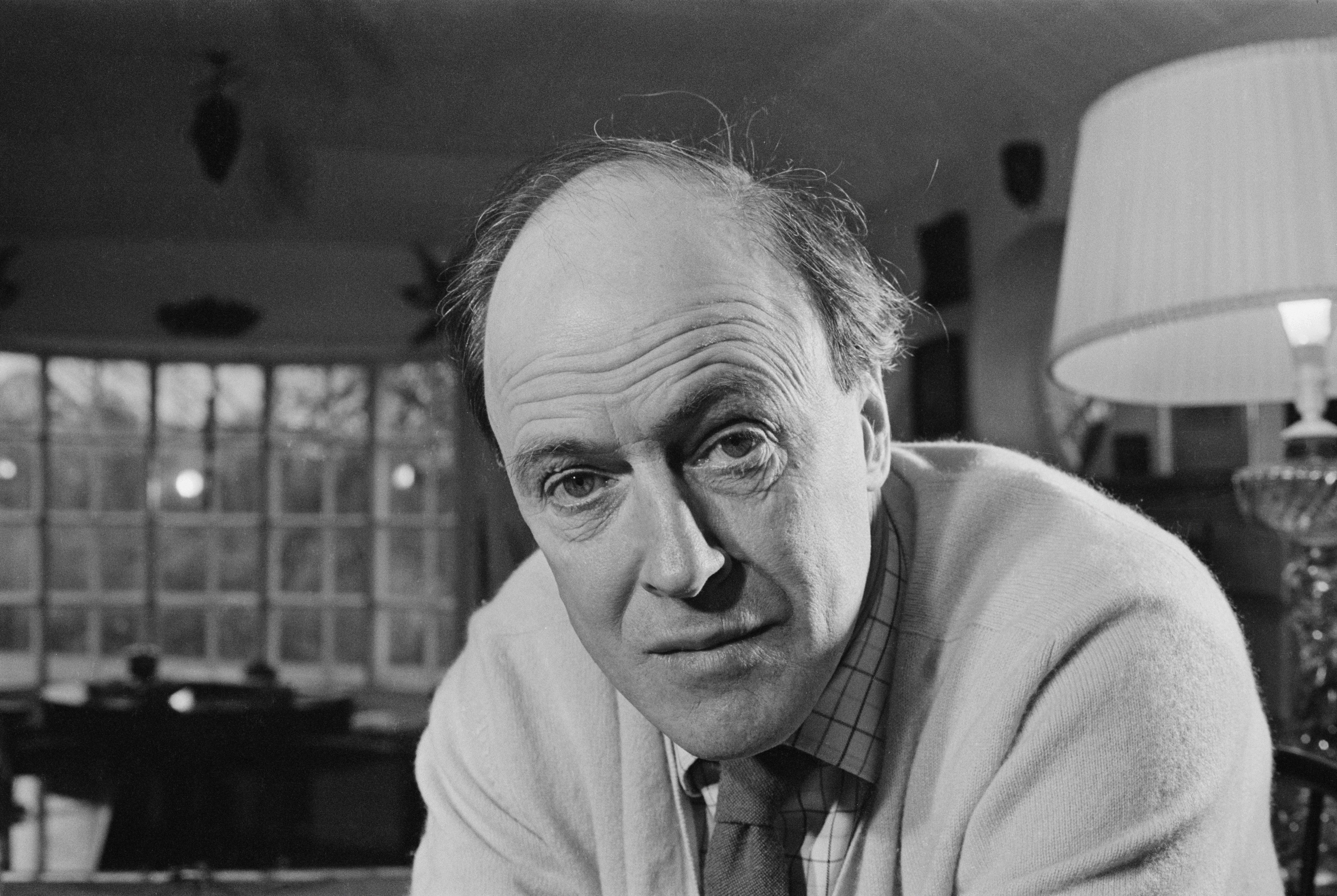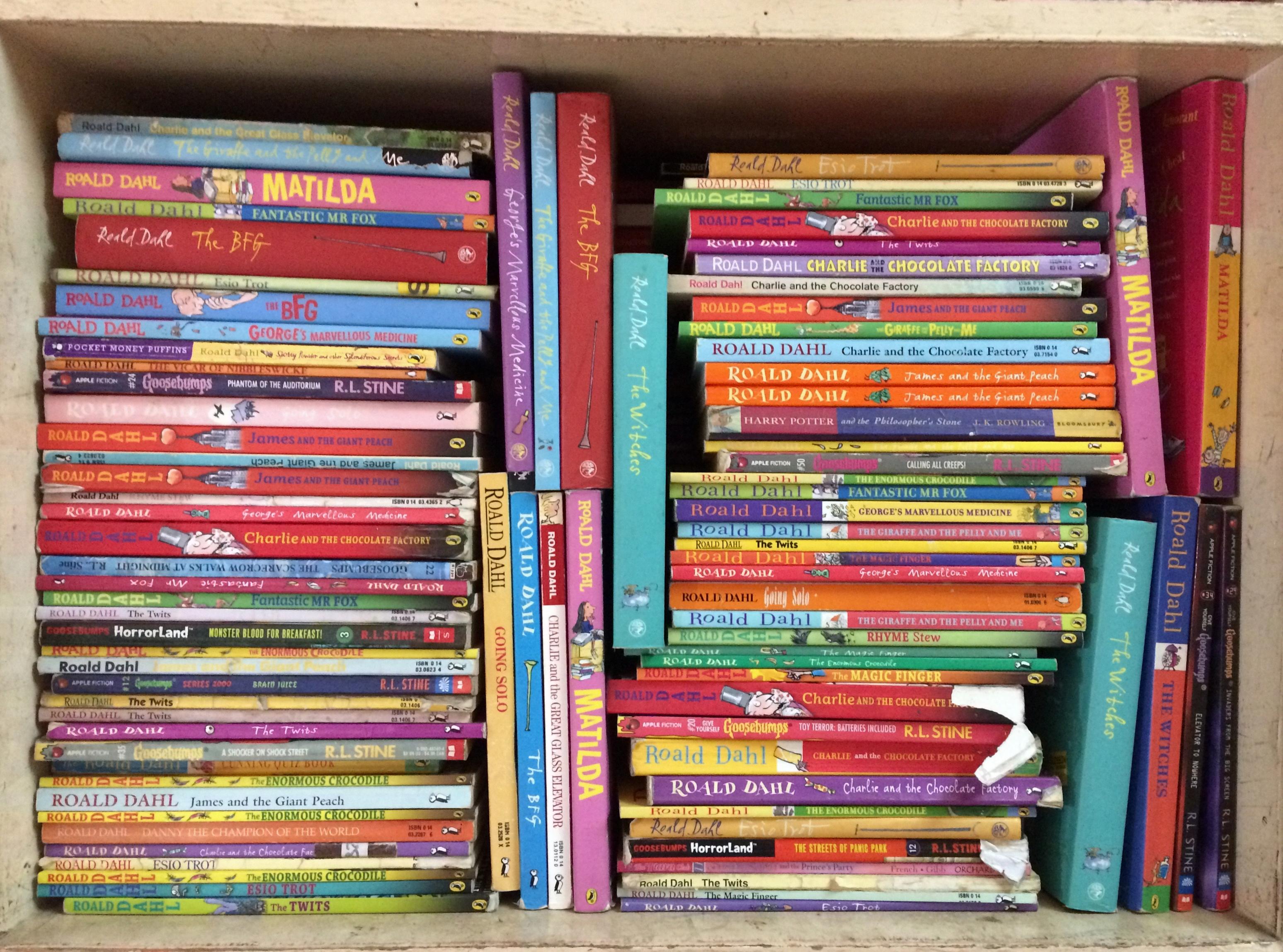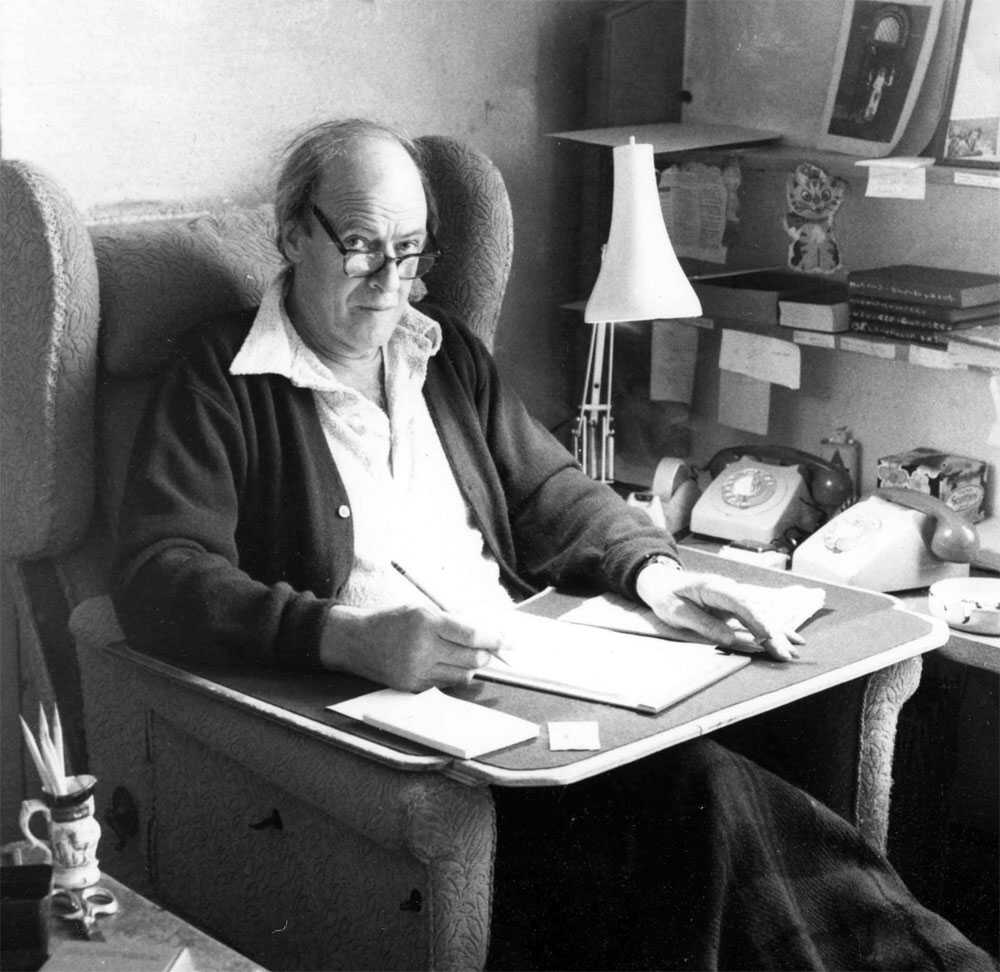Roald Dahl is a name that is synonymous with children’s literature. He is known for his quirky and imaginative stories that continue to captivate young readers even today. However, his life was not without its share of tragedies. In this blog post, we will explore the life of Roald Dahl and how he died.
Roald Dahl was born on September 13, 1916, in Llandaff, Wales. His father, Harald Dahl, was a successful shipbroker, but he died when Roald was only three years old. His older sister, Astri, also died from appendicitis when she was just seven years old. These early losses had a profound impact on Roald, and they would continue to influence his writing throughout his life.
Dahl attended boarding school in England, where he endured brutal abuse from his teachers. After completing his education, he traveled extensively, first joining an expedition to Newfoundland and later working in Tanzania. When World War II broke out, he joined the Royal Air Force and became a fighter pilot. It was during this time that he began writing, creating stories that were inspired by his experiences in the war.
After the war, Dahl turned to writing full-time, publishing his first children’s book, “The Gremlins,” in 1943. He went on to publish many more books, including classics like “Charlie and the Chocolate Factory,” “Matilda,” and “The BFG.” He also wrote screenplays and scripts for popular films like “You Only Live Twice” and “Chitty Chitty Bang Bang.”
In 1962, tragedy struck Dahl’s family once again. His daughter, Olivia, died from measles encephalitis at the age of seven. This event had a profound impact on Dahl, and he became an ardent supporter of measles vaccination. In 1986, he wrote a letter to parents encouraging them to get their children vaccinated.
Roald Dahl passed away on November 23, 1990, at the age of 74. He had been suffering from a rare form of blood cancer called myelodysplastic syndrome. His last book, “Esio Trot,” was published in 1990, and two more completed works, “The Minpins” and “The Vicar of Nibbleswicke,” were published posthumously in 1991.
Roald Dahl’s legacy lives on today though his timeless stories, which continue to inspire and delight children all over the world. His life was marked by both triumphs and tragedies, but his determination and creativity never waned. He will always be remembered as one of the greatest children’s authors of all time.
The Tragic Loss of Roald Dahl’s Daughter
Roald Dahl did lose a daughter named Olivia to measles encephalitis in 1962. This tragic event deeply affected Dahl and his family, and he became a strong advocate for measles vaccination as a result. In 1986, Dahl wrote a letter to parents urging them to vaccinate their children against the disease. Measles encephalitis is a serious and potentially deadly complication of measles, and vaccination is the best way to prevent it. It is important for parents to understand the risks of not vaccinating their children and to take action to protect their health.

Source: independent.co.uk
The Life of Roald Dahl
Roald Dahl was a British novelist, short-story writer, poet, screenwriter, and wartime fighter pilot. He was born in 1916 in Llandaff, Cardiff, Wales. Dahl’s life was marked with tragedy from an early age. When he was only three years old, his father, Harald Dahl, died, followed by his sister Astri, who passed away at the age of seven.
Dahl attended boarding school, were he was subjected to cruel and abusive treatment by the headmaster. Despite this, he excelled academically and eventually went on to attend Repton School. After finishing school, Dahl worked for the Shell Oil Company in East Africa, and later, during World War II, he joined the Royal Air Force and became a fighter pilot.
Dahl had a passion for writing and started his career as an author in the 1940s. He wrote several books for children, including “Charlie and the Chocolate Factory,” “Matilda,” and “James and the Giant Peach.” He also wrote several adult books, such as “Switch Bitch” and “My Uncle Oswald.”
Dahl’s personal life was also full of ups and downs. He married American actress Patricia Neal in 1953, and they had five children together. However, their marriage was plagued with infidelity and ended in divorce in 1983.
Roald Dahl’s life was marked with tragedy, adventure, and success. Despite facing numerous challenges, he went on to become one of the most celebrated children’s authors of all time.
Roald Dahl’s Last Book Before His Death
Roald Dahl was a renowned author who is remembered for his captivating children’s books. The last book that Roald Dahl published before his death was Esio Trot. This book was published in 1990, and it tells the story of Mr. Hoppy, an elderly man who is in love with his neighbor, Mrs. Silver. Mr. Hoppy devises a plan to win her heart by using a spell that he learned from a tortoise expert.
After Roald Dahl’s passing in 1990, two other completed works were published posthumously: The Minpins and The Vicar of Nibbleswicke. However, it appears that The Vicar of Nibbleswicke was the last book he completed before his death. This book was published in 1991 and tells the story of a vicar who suffers from a rare condition called Back-to-Front Syndrome, which causs him to say things backward.
Roald Dahl’s books have captivated generations of children and adults alike. His unique writing style and imaginative stories continue to inspire and entertain readers around the world.
The Age of Roald Dahl
Roald Dahl, the beloved British author, is no longer alive. He passed away on November 23, 1990, at the age of 74, in Oxford, England. Dahl was a prolific writer, known for his imaginative and engaging stories, including “Charlie and the Chocolate Factory,” “Matilda,” and “The BFG.” In addition to his work as a novelist, Dahl also wrote screenplays and scripts for popular films like “You Only Live Twice” and “Chitty Chitty Bang Bang.” Despite his passing, Dahl’s legacy continues to live on through his books, which continue to captivate and inspire children and adults alike around the world.
Removal of Roald Dahl’s Work
Roald Dahl, the renowned children’s author, had his adenoids removed when he was eiht years old. Adenoids are small glands located at the back of the nose, which can sometimes become enlarged and cause breathing difficulties, snoring, and frequent ear infections. In Dahl’s case, the adenoids were removed as a medical procedure to alleviate his breathing problems. However, what’s worth noting is that Dahl’s adenoidectomy was performed without any anaesthetic or explanation. This was a common practice during the time when Dahl was a child, and anaesthesia was not always provided for such procedures. After the adenoid removal, Dahl had to walk half an hour back home from the doctor’s surgery.

Source: en.wikipedia.org
Ten Interesting Facts About Roald Dahl
Roald Dahl is one of the most beloved children’s authors of all time, with many of his stories having been adapted into films and stage productions. Here are 10 interesting fats about the man behind the stories:
1. Roald Dahl’s favourite book was The BFG, which he wrote in 1982. The story was based on a dream he had about a friendly giant who collects dreams.
2. Despite his success as an author, Dahl was not a fan of the film adaptation of his book The Witches. He felt that it strayed too far from the original story.
3. In James and the Giant Peach, the fruit was originally supposed to be a cherry. However, Dahl’s editor suggested that a peach would be more visually interesting.
4. Dahl wrote many of his stories in a small shed in his garden, which he called his “writing hut”. He had a specially-designed writing chair and a ball of silver foil to help him focus.
5. Dahl’s collaboration with illustrator Quentin Blake began when the two worked on a book called The Enormous Crocodile. Dahl had seen some of Blake’s illustrations in a magazine and requested that he illustrate the book.
6. In 2016, the UK celebrated Roald Dahl Day on the author’s 100th birthday. The day is now celebrated annually on September 13th.
7. Dahl’s unique vocabulary and made-up words inspired the creation of the Oxford Roald Dahl Dictionary, which defines words like “scrumdiddlyumptious” and “whizzpopping”.
8. While most people are familiar with Dahl’s books like Charlie and the Chocolate Factory and Matilda, he actually wrote a third book in the Charlie Bucket series called Charlie and the White House.
9. Dahl had a lifelong passion for chocolate, which is evident in many of his books. He even worked as a taste-tester for Cadbury’s chocolate in his youth.
10. Dahl’s own life was just as interesting as his stories. He was a fighter pilot in World War II, a spy for the British government, and a medical inventor who helped develop a valve to treat hydrocephalus.
The Most Successful Book by Roald Dahl
Roald Dahl, a British novelist, is widely considered as one of the greatest storytellers of the 20th century. He has written numerous children’s books, but his most successful work is arguably Charlie and the Chocolate Factory. Originally published in 1964, the book tells the story of a young boy named Charlie Bucket who finds a golden ticket in a chocolate bar that alows him to enter Willy Wonka’s Chocolate Factory.
The popularity of the book lies in its engaging storyline, imaginative characters, and Dahl’s signature dark humor. The book has been translated into several languages and has sold millions of copies worldwide. It has also been adapted into two successful films – one in 1971 and the other in 2005.
Apart from its entertainment value, Charlie and the Chocolate Factory has also been praised for its moral message about the importance of family, humility, and the consequences of greed. The book has been widely used in classrooms as a teaching tool, and it continues to inspire readers of all ages.
Some other notable works by Roald Dahl include Matilda, The BFG, James and the Giant Peach, and The Witches. However, Charlie and the Chocolate Factory remains his most successful book, and its popularity shows no signs of waning.
The Aftermath of Roald Dahl’s Plane Crash
Roald Dahl’s plane was hit by ground anti-aircraft fire, resulting in a devastating crash in the desert. Despite Dahl’s initial belief that he could make it back to base, the severity of the damage sustained by the aircraft made it impossible for him to continue flying. The plane crashed nose-first into the sand, causing severe damage to the aircraft and to Dahl himself.
Upon climbing out of the burning plane, Dahl collapsed on the sand, awaiting rescue. He suffered from severe burns and had sustained a broken nose as a result of the crash. The impact of the crash caused the nose to be pushed in, resulting in significant facial injuries.
The crash was a traumatic event for Dahl, and it left him with lasting scars both physically and mentally. Despite this, he went on to become a successful writer, and his experiences during the crash undoubtedly played a role in shaping his unique perspective and writing style.
Roald Dahl’s plane crashed in the desert afer being hit by ground anti-aircraft fire. He suffered from severe burns and a broken nose, and the crash had a lasting impact on his life and work.
Is Matilda Suitable for Five-Year-Olds?
While Matilda is a beloved children’s book and has recently been adapted into a successful stage production, it may not be entirely appropriate for five-year-olds. The book was originally targeted at children in years five and six, which is aound the age of nine or ten.
Matilda deals with mature themes such as neglectful parenting, emotional abuse, and bullying, which may be difficult for young children to fully comprehend. Additionally, the language and vocabulary used in the book may be too advanced for a five-year-old to fully understand.
While it is ultimately up to individual parents to decide what is appropriate for their children to read, it may be best to wait until a child is a bit older before introducing them to Matilda. In the meantime, there are plenty of other wonderful books available that are more age-appropriate for young children.
To summarize, here are some key points to consider:
– Matilda was originally targeted at children aged nine or ten.
– The book deals with mature themes that may be difficult for young children to fully comprehend.
– The language and vocabulary used in the book may be too advanced for a five-year-old.
– Ultimately, it is up to individual parents to decide what is appropriate for their children to read.

The Inspiration Behind Matilda
Matilda is a beloved children’s book written by Roald Dahl that has since been adapted into a popular film and a stage musical. The story follows the titular character, Matilda Wormwood, a young girl with a love for books and an extraordinary intellect. Matilda’s parents are neglectful and dismissive of her talents, which leads her to seek solace in the books she reads from the library.
The book was based on Dahl’s own experiences as a child, particularly his love for reading and the importance he placed on education. Dahl also drew inspiration from the stories his mother would tell him abot her own childhood, which included tales of her being mistreated by her own headmistress.
Dahl’s writing style is known for its dark humor and whimsical characters, and Matilda is no exception. Throughout the story, Matilda uses her intelligence and cunning to outsmart her neglectful parents and the cruel headmistress of her school, Miss Trunchbull.
Matilda is a heartwarming tale about the power of education and the importance of standing up for oneself, and its enduring popularity is a testament to its universal appeal.
Number of Books Written by Roald Dahl
Roald Dahl, the celebrated British author, wrote a total of 49 books throughout his career. This number includes all of his works, including collections and books published posthumously, but excludes screenplays and plays. Out of the 49 books, 21 were written for children, making up the majority of his literary output. Dahl wrote 18 novels for children and tree books of poetry for children, showcasing his versatility as a writer. It is worth noting that Dahl’s children’s novels are some of the most beloved and iconic works in children’s literature, such as “Charlie and the Chocolate Factory,” “Matilda,” and “The BFG.” Dahl’s extensive body of work continues to inspire and delight readers of all ages.
Roald Dahl’s Last Children’s Book
Roald Dahl, the renowned British author, wrote several children’s books that have become classics over the years. His last children’s book was titled “The Minpins,” which was published in 1991. The book is about a young boy named Little Billy who meets magical miniature people called Minpins in the woods. The Minpins warn him about a monster called the Gruncher that lives in the forest and eats everything in its path. Little Billy sets out to defeat the Gruncher with the help of the Minpins.
“The Minpins” was illustrated by Patrick Benson, who had previously worked with Dahl on “The BFG” and “Esio Trot.” However, Sir Quentin Blake, who was Dahl’s principal illustrator, did not illustrate this book. This makes “The Minpins” the only one of Dahl’s children’s books that Blake has not illustrated.
Roald Dahl passed away in 1990, just before “The Minpins” was published. The book was dedicated to his granddaughter, Sophie Dahl, and is considered a beloved classic in children’s literature.
Roald Dahl’s Beneficiaries of His Estate
Roald Dahl, the beloved British author of children’s books, passed away in 1990 at the age of 74, leaving behind an impressive fortune. His net worth at the time of his passing was estimated to be around $10 million.
In his will, Roald Dahl designated his wife, Felicity, as the primary beneficiary of his estate. Following his death, Felicity inherited the majority of the $3.75 million that Roald had left behind, which equates to roughly $6.75 million in today’s dollars.
It’s worth noting that Roald Dahl had five children from his first marriage, but he did not leave a significant portion of his estate to them. Instead, he established a trust fund for them, which they were able to access upon reaching certain milestones in their lives, such as turning 21 or getting married.
Roald Dahl’s estate plan was designed to provide for his wife and ensure that his children were taken care of in the long term, raher than leaving them with a lump sum of money that they could potentially mismanage or squander.

Conclusion
Roald Dahl was a beloved British author known for his imaginative and whimsical stories that captivated the minds of children and adults alike. He had a fascinating life, full of both joy and tragedy, which influenced his writing in many ways.
Dahl’s advocacy for measles vaccination after the death of his daughter Olivia from measles encephalitis shows his concern for the health and well-being of children. His own experiences of loss and abuse also shaped his perspective and writing style. Despite these difficulties, he remained determined and passionate thoughout his life, traveling the world, serving in the Royal Air Force, and becoming a successful writer.
Dahl’s legacy lives on through his books, which continue to inspire and entertain generations of readers. His last completed book, Esio Trot, was published shortly before his death, and two more were published posthumously. His contributions to literature and film will be remembered for years to come.
Roald Dahl was a remarkable writer and human being who overcame adversity and inspired millions of people with his stories. Whether you are a fan of his books or just discovering them for the first time, his work will continue to delight and inspire you for years to come.
